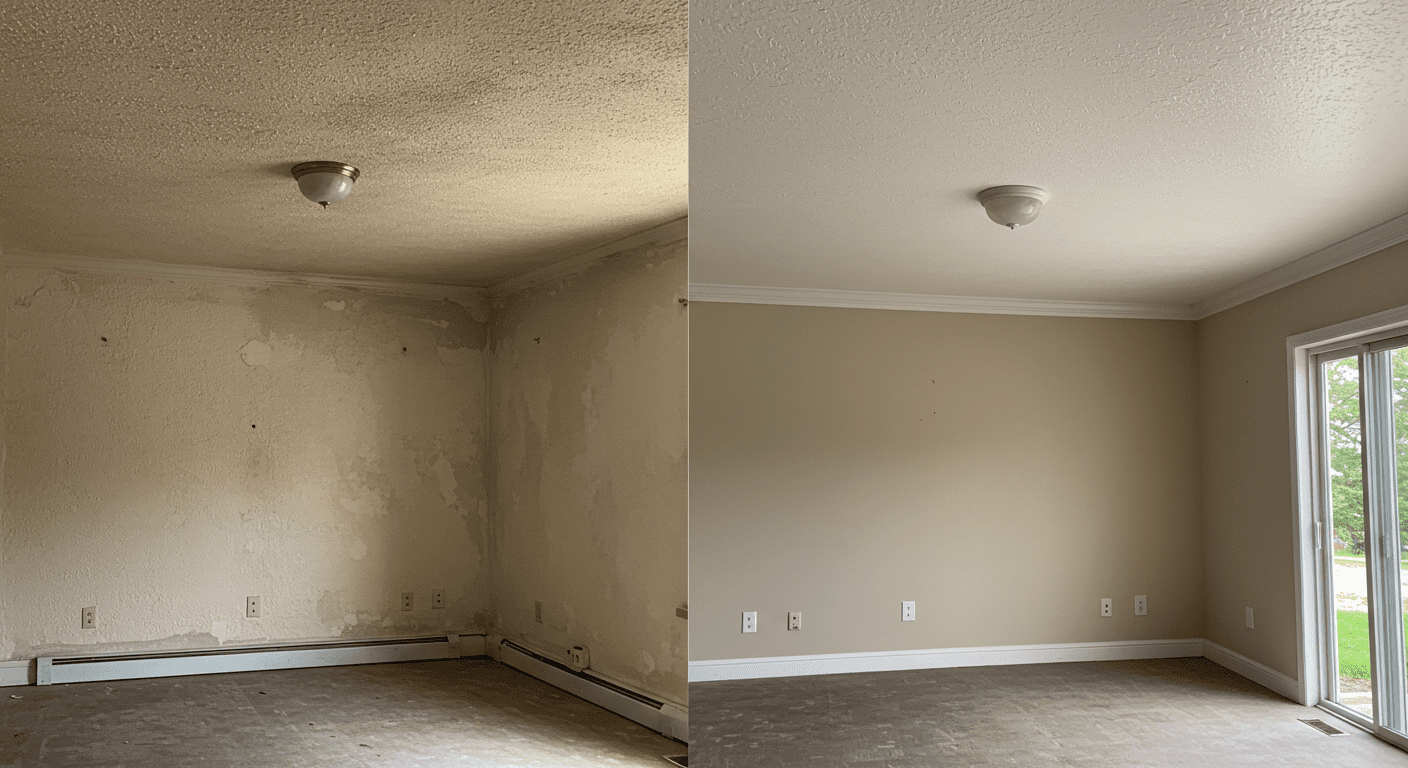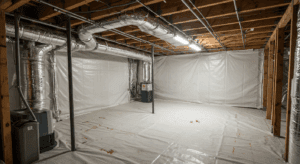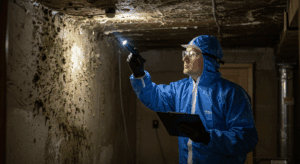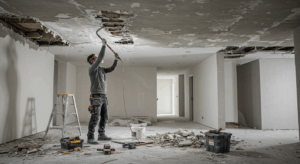Popcorn ceilings, also known as acoustic ceilings, have been a staple in home design for decades. While they were once celebrated for their practicality and aesthetic appeal, their popularity has waned in recent years. This article delves into the purpose of popcorn ceilings, their advantages and disadvantages, and modern alternatives that homeowners are now embracing.
Overview of Popcorn Ceilings
Definition and Historical Context
Popcorn ceilings are a type of textured ceiling finish characterized by their bumpy, irregular surface. This texture is achieved by spraying a mixture of drywall compound and other materials, such as polystyrene or vermiculite, onto the ceiling. The result is a ceiling that resembles popcorn, hence the name.
The origins of popcorn ceilings can be traced back to the mid-20th century. During the 1950s and 1960s, they became a popular choice for residential and commercial buildings due to their practicality and ease of application.
Popularity from the 1950s to the 1990s
From the 1950s through the 1990s, popcorn ceilings were a dominant trend in home construction. Builders and homeowners favored them for their ability to hide imperfections, reduce noise, and add a touch of texture to otherwise plain ceilings. However, as design trends evolved, the appeal of popcorn ceilings began to diminish, and they are now often regarded as outdated.
Purpose of Popcorn Ceilings
Aesthetic Appeal and Design Trends
Popcorn ceilings were initially introduced as a design feature to add texture and character to a room. In an era when smooth ceilings were the norm, the unique appearance of popcorn ceilings provided a fresh and modern alternative. They were particularly popular in mid-century homes, where textured finishes were a hallmark of contemporary design.
Sound Absorption and Acoustic Benefits
One of the primary reasons for the widespread use of popcorn ceilings was their acoustic properties. The textured surface helped to absorb sound, reducing echoes and noise within a room. This made them an ideal choice for spaces such as living rooms, bedrooms, and apartments, where noise reduction was a priority.
Advantages and Disadvantages of Popcorn Ceilings
Key Advantages
1. Cost-Effectiveness and Installation Ease
Popcorn ceilings were a cost-effective solution for builders and homeowners. The materials were inexpensive, and the application process was quick and straightforward, making them a practical choice for large-scale construction projects.
-
Concealing Ceiling Imperfections
The textured surface of popcorn ceilings effectively concealed imperfections such as cracks, stains, and uneven surfaces. This eliminated the need for extensive ceiling repairs or refinishing, saving time and money. -
Noise Reduction Benefits
The acoustic properties of popcorn ceilings made them a popular choice for reducing noise in multi-story buildings and apartments. The textured surface absorbed sound waves, creating a quieter and more comfortable living environment.
Notable Disadvantages
1. Cleaning and Maintenance Challenges
One of the biggest drawbacks of popcorn ceilings is their difficulty to clean. The textured surface tends to trap dust, cobwebs, and dirt, making regular maintenance a challenge.
-
Repair Difficulties
Repairing a damaged popcorn ceiling can be a daunting task. Matching the texture of the original ceiling is often difficult, resulting in a patchy or uneven appearance. -
Outdated Appearance and Health Risks
Over time, popcorn ceilings have fallen out of favor due to their outdated look. Additionally, older popcorn ceilings may contain asbestos, a hazardous material linked to serious health risks. Homeowners are advised to test for asbestos before attempting removal or repairs.
Removal and Modern Alternatives
Benefits of Removing Popcorn Ceilings
Removing popcorn ceilings can significantly enhance the aesthetic appeal and value of a home. A smooth or modern textured ceiling provides a clean and contemporary look that aligns with current design trends. Additionally, removing potential asbestos-containing materials eliminates health risks, ensuring a safer living environment.
Exploring Modern Alternatives: Smooth Ceilings and Textured Options
Modern alternatives to popcorn ceilings include smooth ceilings, knockdown textures, and coffered designs. Smooth ceilings offer a sleek and minimalist appearance, while knockdown textures provide a subtle, elegant finish. Coffered ceilings, with their intricate patterns and recessed panels, add a touch of sophistication to any room.

These alternatives not only improve the visual appeal of a home but also align with contemporary design preferences, making them a popular choice among homeowners and interior designers.
Conclusion
Popcorn ceilings have had a fascinating journey, from their rise in popularity during the mid-20th century to their decline in favor of modern alternatives. While they served practical purposes such as noise reduction and concealing imperfections, their outdated appearance and maintenance challenges have led many homeowners to seek alternatives. By embracing smooth or textured ceiling designs, homeowners can create a stylish and functional living space that reflects current trends.
For more insights on home improvement and health-related concerns, explore Effective Black Mold Control Solutions in Hickory, NC: Protect Your Home and Health. Additionally, learn more about popcorn ceilings and their impact on home value through resources like Multi Trade Building Services, Five Star Painting Blog, and Revive Real Estate.




